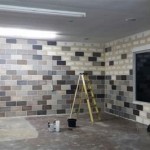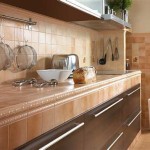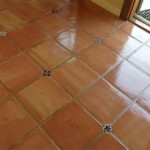Transform Your Bathroom With Subway Tile
Subway tile, a rectangular ceramic tile, typically measuring 3 inches by 6 inches, has become a ubiquitous design element in modern and classic bathrooms alike. Its clean lines, versatility, and affordability have contributed to its enduring popularity. Beyond its aesthetic appeal, subway tile offers practical benefits, including water resistance, ease of cleaning, and durability, making it an ideal choice for bathroom surfaces.
The widespread use of subway tile can be attributed to its historical roots. Introduced in the early 20th century for the New York City subway system, these tiles were chosen for their hygienic properties and ability to reflect light in the often dimly lit underground stations. The simple design proved to be both functional and visually appealing, leading to its adoption in residential and commercial spaces. Today, subway tile continues to be a preferred material for homeowners seeking a timeless and practical bathroom design.
The transformative power of subway tile lies in its ability to adapt to various design styles. It can seamlessly integrate into minimalist, modern, farmhouse, and even traditional bathrooms. The seemingly simple tile acts as a blank canvas, allowing for creative expression through color, grout selection, and installation patterns. The following sections will explore key aspects of utilizing subway tile to transform a bathroom space.
Understanding the Versatility of Subway Tile
Subway tile is not a monolithic entity. While the classic 3x6 inch white ceramic tile remains the most recognizable, a wide array of variations exists. These variations offer an opportunity to customize the look of a bathroom and achieve a unique aesthetic. The options extend to material, color, size, finish, and texture.
Material: While ceramic is the most common and cost-effective material for subway tile, options like porcelain, glass, and even natural stone are available. Porcelain offers greater durability and water resistance compared to ceramic. Glass tiles provide a glossy, reflective surface that can brighten a space. Natural stone, such as marble or travertine, lends a luxurious and organic feel. The choice of material will ultimately impact the overall look and feel of the bathroom, as well as the budget.
Color: White subway tile is a timeless choice, offering a clean and bright aesthetic. However, a wide range of colors are readily available, from subtle neutrals like gray and beige to bolder hues like blue, green, and even black. Colored subway tile can be used to create a focal point, add personality, or complement existing fixtures and décor. A subtle color variation in tile batches can also create a handcrafted or antique aesthetic.
Size: Although 3x6 inches is the standard size, subway tiles are available in various dimensions, including 2x4, 4x8, and even longer, thinner formats. Larger tiles can make a small bathroom appear larger by reducing grout lines and creating a more seamless look. Smaller tiles can be used to create intricate patterns or for accent walls.
Finish: Subway tiles typically come in two finishes: glossy and matte. Glossy tiles reflect more light, making them a good choice for smaller or darker bathrooms. Matte tiles offer a softer, more subtle look and are less prone to showing water spots or fingerprints. A honed finish presents an in-between option, offering a low level of sheen that provides a more modern aesthetic.
Texture: While most subway tiles have a smooth, flat surface, textured options are available. These tiles can feature beveled edges, raised patterns, or even a rippled surface. Textured subway tiles add depth and visual interest to a bathroom and can be used to create a more tactile experience.
Exploring Installation Patterns and Grout Choices
The installation pattern of subway tile significantly impacts the overall aesthetic of a bathroom. Beyond the traditional horizontal running bond pattern, several other options exist, each offering a unique visual effect. The grout choice, both in terms of color and width, further enhances the design. Careful consideration of these factors is crucial to achieving the desired look.
Running Bond: This is the most common subway tile pattern, where each tile is offset by half its length from the tile above or below it. The running bond pattern is visually appealing and helps to distribute weight evenly across the wall or floor. It is a classic and versatile choice that works well in both traditional and modern bathrooms.
Stacked: In a stacked pattern, the tiles are aligned vertically or horizontally, creating a clean, grid-like appearance. This pattern is often used in contemporary bathrooms to create a minimalist and modern look. A vertical stacked pattern can make a ceiling appear higher, while a horizontal stacked pattern can make a room appear wider.
Herringbone: The herringbone pattern involves arranging the tiles in a V-shape, creating a dynamic and visually interesting design. This pattern is often used for accent walls or in smaller areas to add a touch of elegance. The herringbone pattern requires more cuts and therefore, more material than more simple patterns.
Vertical Running Bond: This pattern is a variation of the running bond, but the tiles are installed vertically instead of horizontally. This pattern can make a ceiling appear higher and is often used in small bathrooms to create a sense of spaciousness. This pattern will also lend a more modern feel compared to the standard horizontal layout.
Grout Color: Grout plays a critical role in the overall look of a subway tile installation. White grout is a classic choice that creates a clean and seamless look, allowing the tiles to blend together. Dark grout, such as gray or black, creates a more defined look, highlighting the shape and pattern of the tiles. Colored grout can be used to add a pop of color or to complement the color of the tiles. The grout color should be carefully chosen to achieve the desired effect.
Grout Width: The width of the grout lines also affects the overall aesthetic. Narrow grout lines create a more seamless look, while wider grout lines add more definition and texture. Wider grout lines are often used with handmade or rustic tiles to accentuate their imperfections. The grout width should be consistent throughout the installation for a professional finish.
Incorporating Subway Tile in Different Bathroom Zones
Subway tile's versatility extends to its applicability in various zones within a bathroom. From shower walls to backsplashes and even flooring, subway tile can effectively enhance both the aesthetic and functionality of different areas. The selection of appropriate materials and installation techniques is crucial to ensure long-term performance and avoid potential issues like water damage.
Shower Walls: Subway tile is an excellent choice for shower walls due to its water resistance and ease of cleaning. Porcelain or glass subway tiles are particularly well-suited for this application, as they are less porous than ceramic and less likely to absorb moisture. Proper waterproofing is essential when installing subway tile in a shower to prevent water from penetrating the wall cavity. This typically involves applying a waterproof membrane behind the tile, such as a liquid membrane or a sheet membrane. The selection of a mold and mildew resistant grout is also crucial to maintain the cleanliness and hygiene of the shower area.
Backsplash: Subway tile backsplashes are a popular choice for bathroom vanities. They provide a durable and easy-to-clean surface that protects the wall from splashes and spills. A subway tile backsplash can complement any bathroom style, from traditional to modern. Installing a bullnose tile along the top edge of the backsplash provides a finished look and prevents water from seeping behind the tiles. The height of the backsplash should be proportionate to the size of the vanity and the overall design of the bathroom.
Flooring: While less common than on walls, subway tile can be used on bathroom floors, particularly in smaller bathrooms or as an accent. When using subway tile on the floor, it is important to choose a tile with a non-slip surface to prevent accidents. Porcelain subway tiles are a good choice for flooring due to their durability and water resistance. Wider grout lines are recommended for floor tiles to provide better traction. Consider using a different installation pattern on the floor than on the walls to create visual interest.
Accent Walls: Subway tile is often used to create accent walls in bathrooms. This can be achieved by using a different color, size, or finish of subway tile than the rest of the bathroom. A herringbone pattern or a vertical stacked pattern can also be used to create a visually striking accent wall. An accent wall can be used to highlight a particular feature of the bathroom, such as a freestanding tub or a vanity. The placement of the accent wall should be carefully considered to ensure that it complements the overall design of the bathroom.
In summary, subway tile offers a versatile and affordable solution for transforming a bathroom space. By considering the various options available in terms of material, color, size, finish, and installation pattern, homeowners can create a unique and personalized bathroom that reflects their individual style. Proper installation techniques and the selection of appropriate grout are crucial to ensure the longevity and performance of the subway tile installation. The enduring appeal of subway tile lies in its ability to adapt to various design styles and its practical benefits in a bathroom environment.

24 Best Subway Tile Bathroom Ideas How To Use 2024

20 Subway Tile Design Ideas For Bathrooms

24 Best Subway Tile Bathroom Ideas How To Use 2024

Shower Wall 10 Tile Trends That You Should Consider Stone Depot

How Subway Tile Shower Is Used 9 New Ways To Design Stone Depot

7 Takes On A Dreamy White Subway Tile Bathroom Sweeten Com

6 Bathroom Tile Styles To Inspire Your Remodel

Bathroom Tile Trends 10 White Subway Ideas Marble Systems

84 Chic Subway Tiles Ideas For Bathrooms Digsdigs

How Subway Tile Shower Is Used 9 New Ways To Design Stone Depot
Related Posts








